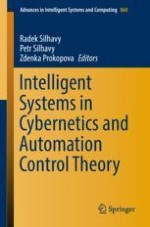2019 | OriginalPaper | Buchkapitel
Indirect Optimal Approach Applied to H1N1 Spread Through Moroccan Regions
verfasst von : Amine Bouaine, Mostafa Rachik
Erschienen in: Intelligent Systems in Cybernetics and Automation Control Theory
Aktivieren Sie unsere intelligente Suche, um passende Fachinhalte oder Patente zu finden.
Wählen Sie Textabschnitte aus um mit Künstlicher Intelligenz passenden Patente zu finden. powered by
Markieren Sie Textabschnitte, um KI-gestützt weitere passende Inhalte zu finden. powered by
